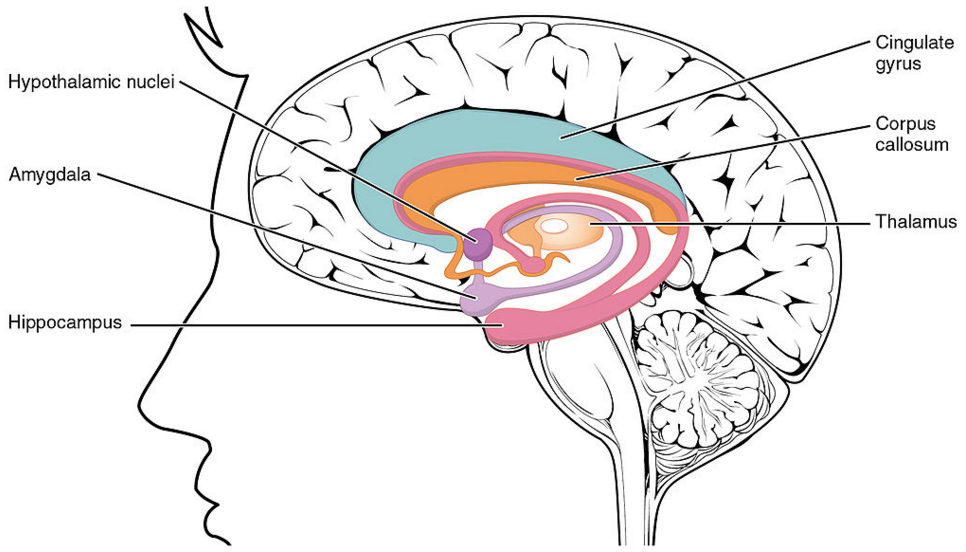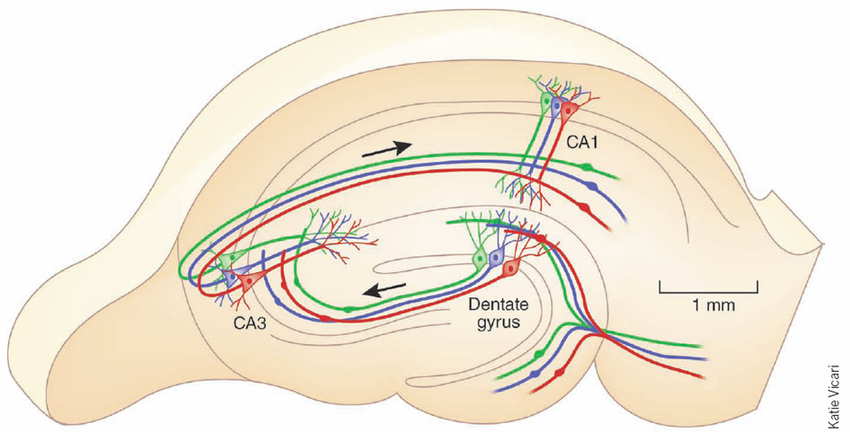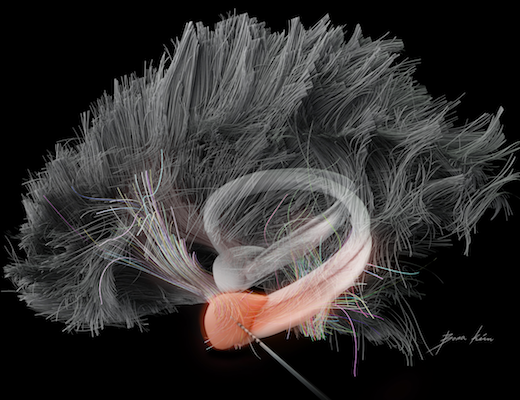|
|
Developmental biology - Brain Function
The Hippocampus
New research finds the hippocampus may also be important in addiction, anxiety and depression...
The hippocampus, commonly associated with memory and dementia, could also be key to how we regulate our emotions, according to the University of Toronto (U of T) Scarborough, Canada. It may also give us important clues about a host of mental illnesses, including addiction, anxiety and depression. Research, authored by a team of U of T neuroscientists, challenges our understanding of exactly how the hippocampus works.
The research is published in the journal Current Biology.
"What this shows is that we may need to rethink how the hippocampus processes information."
Rutsuko Ito PhD, Associate Professor, Department of Psychology, University of Toronto Scarborough.

The hippocampus is a seahorse-shaped structure located deep inside our brain. As part of the limbic system, it plays an important role in our memory and spatial abilities, including how we learn to navigate our environment.

Figure from related material: Analysis, tuning and implementation of neuronal models simulating Hippocampus dynamics
Researchers have long looked at the hippocampus for its role in memory and dementia, especially in relation to Alzheimer's disease. This region is one of the first areas of the brain to suffer damage in Alzheimer's patients.
But there are a few studies suggesting the anterior hippocampus, a sub-region located at its very front, could play a role in emotion regulation - such as anxiety.
For this study, Ito and her team looked at the ventral hippocampus in rats, a sub-region that correlates to the human anterior hippocampus. Her team wanted to see what role two deeper subareas in the ventral hippocampus - called CA1 and CA3 - play in "approach-avoidance" conflict resolution.
Approach-avoidance conflict is a model test used in psychology to measure how animals deal with regulating their fear and anxiety. It puts the animal in a situation that demands a decision about whether to pursue or avoid something that could resolve in either a positive or negative way.
"One good example: imagine going to a restaurant you love, but the moment you walk in you see someone you can't stand! Do you go in, or avoid going in?" explains Associate Professor Andy Lee, who collaborated on this research.
After temporarily inactivating the CA1 region of the hippocampus, scientists observed increased avoidance of conflict. Meanwhile, inactivating the CA3 increased approach behavior to conflict.
Ito believes this finding is important as conventional thinking is that CA1 and CA3 along with the dentate gyrus, form a complete circuit where information flow occurs in only one direction. Information processed by the dentate gyrus gets passed along to the CA3, and then on to CA1. So that CA1 and CA3 should carry out the same function because they're both part of the same information processing circuit.
"But that's not the case, the CA1 and CA3 in the ventral hippocampus seem to do very opposite things in relation to conflict processing. This strange bi-directional or oppositional effect, goes against traditional thinking of how information processing takes place in this part of the brain."
Rutsuko Ito PhD
Because of its possible role in basic motivational behavior, this unexplained, strange bi-directional or oppositional effect may offer important insight into a range of mental health illnesses. Addiction might now be linked to deficits in "approach motivation." While anxiety and depression could be linked to "avoidance behaviors," all manifested in this part of our brain morphology.
Ito next wants to explore the connections to CA1, CA3, from other parts of the brain which could be responsible for this unexpected result. Meanwhile, Lee is investigating the role sub-regions of the hippocampus play in human conflict processing.
"Some patients have lesions in certain areas of this part of the brain. Hopefully we can assess what particular aspects of their "approach avoidance behavior" is or is not impacted."
Andy C.H. Lee PhD, Department of Psychology (Scarborough), University of Toronto, Canada; Rotman Research Institute, Baycrest Centre, Toronto, Canada
Highlights
• Rats underwent a cue-based learned approach-avoidance conflict paradigm
• Ventral CA3 inactivation increased approach behavior to a conflict cue
• Ventral CA1 inactivation induced increased avoidance of the conflict cue
• Hippocampal subfields play distinct roles in learned approach-avoidance conflict
Summary
Approach-avoidance conflict arises when an animal encounters a stimulus that is associated simultaneously with positive and negative valences [1]. The effective resolution of approach-avoidance conflict is critical for survival and is believed to go awry in a number of mental disorders, such as anxiety and addiction. An accumulation of evidence from both rodents and humans suggests that the ventral hippocampus (anterior in humans) plays a key role in approach-avoidance conflict processing [2, 3, 4, 5, 6, 7, 8], with one influential model proposing that this structure modulates behavioral inhibition in the face of conflicting goals by increasing the influence of negative valences [9]. Very little is known, however, about the contributions of specific hippocampal subregions to this process—an important issue given the functional and anatomical heterogeneity of this structure. Using a non-spatial cue-based paradigm in rats, we found that transient pharmacological inactivation of ventral CA1 produced an avoidance of a conflict cue imbued with both learned positive and learned negative outcomes, whereas inactivation of the ventral CA3 resulted in the opposite pattern of behavior, with significant preference for the conflict cue. In contrast, dorsal CA1- and CA3-inactivated rats showed no change in conflict behavior, and furthermore, additional behavioral tasks confirmed that the observed pattern of approach-avoidance findings could not be explained by other factors, such as differential alterations in novelty detection or locomotor activity. Our data demonstrate that ventral CA1 and CA3 subserve distinct and opposing roles in approach-avoidance conflict processing and provide important insight into the functions and circuitry of the ventral hippocampus.
Authors: Anett Schumacher, Franz R. Villaruel, Alicia Ussling, Sadia Riaz, Andy C.H. Lee4, Rutsuko Ito
Competing Financial Interests: The authors declare no conflict of interest
Grant Support: This work was funded by the Natural Sciences and Engineering Research Council of Canada (A.C.H.L.: 402651 ; R.I.: 402642 ) and the Canadian Institutes of Health Research (A.C.H.L. and R.I.: 156070 ).
Return to top of page
| |
|
Apr 23, 2018 Fetal Timeline Maternal Timeline News News Archive
 The Hippocampus (WHITE to PINK) is a seahorse shaped structure deep inside our brain which seems to "end" in a bulb just below the Amygdala (GREY) above. It plays an important role in our memory and spatial recognition, and is implicated in how we learn to navigate our environment.
Illustration by Bona Kim
|




